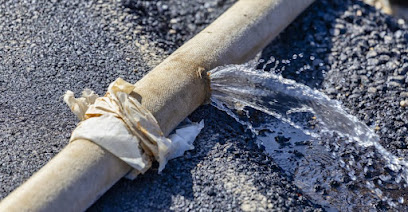Can I install a new tankless water heater myself?
If you're someone who needs a new water heater or gas furnace installed quickly for any number of reasons in san diego (including that your current water heater has gone out), there are many ways in which home improvement professionals may be helpful — but installing one yourself is also very possible if you follow the right steps.
Step 1: Determine if you need a new water heater or gas furnace installed.
If your existing water heater needs to be replaced, you'll want to make sure that replacement of water heater is done by an energy efficient contractor. (The laws differ from state to state, but most contractors are required to be certified by the Department of Energy.) Before buying a water heater, you may consider determining how much energy it uses each month — especially if your home is filled with climate control systems or conveniently located near the laundry room. To find out how much your water heater uses, you'll want to rent an energy tester which is capable of showing you the gallons used each hour, day and month. You can also set up a service appointment on Delta Energy Solutions' website to get a precise reading on the device.
If your home is relatively cool or mildly heated, perhaps because you use air conditioning instead of heat, then it's likely that gas furnaces are more appropriate for your needs. You'll find that gas furnaces, such as the one made by Amana, are also considerably less expensive to install and maintain.
Step 2: Get your permits.
Depending on the state you live in, you may or may not need a permit to install a new water heater or gas furnace. Get your permits and also notify the city or town in which your home is located of any work you plan to do.
Step 3: Consider a tankless water heater.
Tankless water heaters are uniquely suited to homeowners who want to save on heating costs at their homes. Specifically, these units are designed with the idea of hot water being pulled directly from a source without the need for an outside tank or any other plumbing equipment.
Even so, tankless water heaters are often much more expensive to install than traditional water heaters. For the average homeowner, this higher cost may not be worth it. However, if you have a lot of people in your home or live in a climate where hot water is often used, then you may find that a tankless unit is well worth any added cost.
Step 4: Get your materials together.
In order to install a new water heater or gas furnace yourself, you'll need a few tools on hand. For example, you'll want the right type of wrench and screwdriver set as this can make it easier to disconnect your old water heater or gas furnace as well as install your new one.
You may also want to invest in some waterproof gloves — particularly if you plan to work outside or in the snow.
Step 6: Install your new water heater or gas furnace.
Now that you've removed your old water heater, you'll want to install the new one — which can be done in a number of different ways. If you'd like to install a tankless unit, follow the instructions that came with the unit. Then, connect your drain lines and installation valves (if ordered) to the system. You'll also want to connect your gas lines, and turn your gas valve to the "on" position.
Step 7: Learn how to operate your new water heater.
With the new unit in place, you'll want to learn how to use it properly. This step is important because you'll want to use hot water only for pressing purposes and store cold water for cooking or cleaning purposes. You can also adjust the temperature settings on either your tankless or traditional model using a few simple knobs — which can be found on both units.
In order to install a traditional water heater, you'll need to follow these steps:
Follow the instructions included with your water heater in order to install it — paying special attention to how far above the ground it should be. (This will vary considerably depending on your home's foundation.) Make sure that all of the plumbing and electrical lines are connected prior to turning the circuit breaker back on. You'll also want to turn on the water supply valve and let the water run for at least 5 minutes before turning it back off.
Conclusion:
Installing a new water heater or gas furnace can be a lot of work — particularly if you're new to these sorts of projects. However, if you plan ahead and consider your needs, then it may be well worth the added cost and effort. Additionally, if you hire a tankless water heater contractor from EZ Leak Detection, you may find that they will be able to do most of this work for you and make tankless water heater installation work smooth and quick.
Author Bio:- Karl Brown
Karl, a marketing manager at EZ Leak Detection, loves to write about plumbing and HVAC services to make the life of the reader easier. Leakages in your property can be dangerous but not all the leaks are easily accessible. He has given extensive information about water leak and slab leak and tips to detect them quickly along with quick solutions to prevent you from inconveniences and health hazards.
Leakage problems and malfunction of appliances demand comprehensive solutions. Also, regular maintenance is not the thing to be missed for leading life with zero hassles. Read our recent post related to leakage detection and repair, alerts for HVAC shutdown and how to repair it, and installation of AC and water heater in San Diego.





Comments
Post a Comment